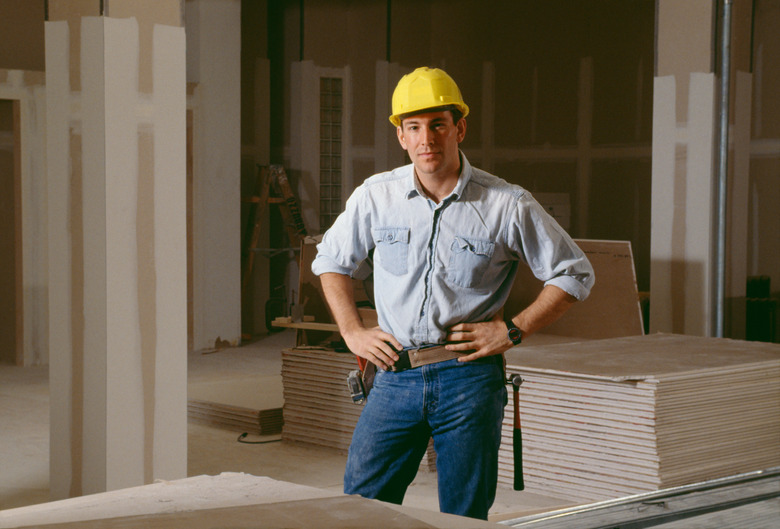Which Is Cheapest To Install: Drywall Or Beadboard?
The cost of installing drywall or beadboard will vary greatly depending on the size of the space, exact material type and whether you will be doing the installation yourself or hiring a contractor. The best option may come down to preferences and budget. The least expensive option between drywall and beadboard is paneling, which is easier to install and less costly per-square foot. However, consider the quality prior to installation, as it sometimes is not worth the savings to have low quality drywall or beadboard.
Cost of Drywall
Cost of Drywall
Drywall materials average $0.25 to $0.65 per square foot, according to Cost Helper, as of 2011. This cost estimate commonly includes joint compound, tape, screws or nails. Professional installation will average an additional $0.85 to $1.50 per square foot. The cost to drywall a 4,000 square foot area will average between $4,400 and $8,600. Things that affect the cost include irregular layouts and cathedral ceilings. It pays to do it yourself if capable; the cost for installing drywall in a 12 by 12-foot room yourself is brought down to $150 to $250, and $1,000 to $3,000 for a small house.
Cost of Beadboard
Cost of Beadboard
One factor that will impact the cost of beadboard is whether real beadboard or paneling is used. Beadboard is commonly sold in packages measured by square foot. Typically, each strip measures 8 feet in length. Each beadboard strip has a tongue on one edge and groove on the other. When one strip is connected to another, they create a bead. These packages are found in various materials, from more costly real wood varieties to less costly paneling options. Expect to spend more than $1 per square foot on real beadboard, while panel alternatives range between $0.50 and $0.70 per square foot. Red oak beadboard averages $11 per square foot; maple averages $18 per square foot — and cherry averages as much as $22 per square foot, according to Cost Helper, as of 2011.
Cost Considerations
Cost Considerations
To determine whether drywall or beadboard is less costly to install the size of the area, consider material and labor costs. While beadboard is nice for dressing up a dining room, it is not sturdy enough for under the stairs, and may rattle when someone goes up and down the stairs. The cost of installation can be very costly for both of these options. Drywall is heavy and will take at least two workers to install, doubling the cost of installation alone, while tongue-and-groove beadboard is more time-intensive and requires additional framing members. Beadboard panels are perhaps the easiest to install and the friendliest option to modest budgets.
Shopping
Shopping
When shopping for drywall or beadboard, be sure to get several cost estimates and make sure to find out what is and is not included in each estimate. Make sure you understand the size of beadboard packages or panels, or drywall sheets. If hiring a contractor, find out if removal and clean-up is included, and always request references, length of experience and insurance information. If you do the work yourself, account for mistakes by purchasing up to 20 percent more material than you need, which adds to the overall cost but is still cheaper than paying someone to install.
